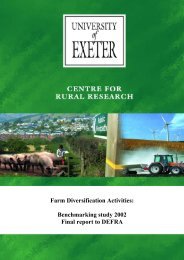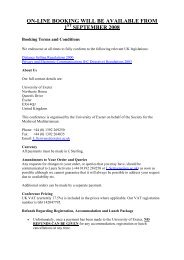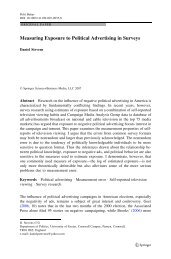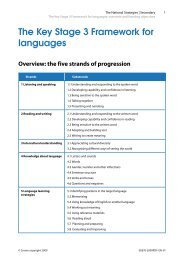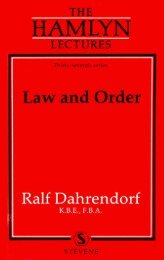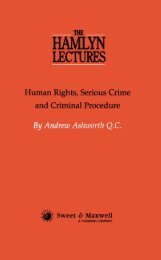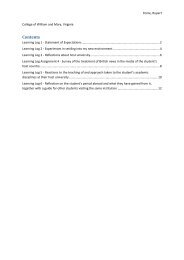Blackstone's Tower: The English Law School - College of Social ...
Blackstone's Tower: The English Law School - College of Social ...
Blackstone's Tower: The English Law School - College of Social ...
Create successful ePaper yourself
Turn your PDF publications into a flip-book with our unique Google optimized e-Paper software.
<strong>Law</strong> <strong>School</strong> Culture: A Visit to Rutland<br />
justifiably claim various kinds <strong>of</strong> relative deprivation in their background,<br />
situation and prospects. 20 <strong>The</strong> bare figures can also be misleading<br />
about class. <strong>The</strong>re is a good deal <strong>of</strong> evidence to suggest that<br />
the great majority <strong>of</strong> law students and an even higher proportion <strong>of</strong><br />
practising lawyers in most Commonwealth jurisdictions come from<br />
the upper middle class and above. 21 Rutland does not have many<br />
so-called "Oxbridge rejects", but in most respects, despite some<br />
attempts to disguise the fact, it is predominantly middle class, both<br />
demographically and culturally—an elite institution, somewhere in<br />
the middle <strong>of</strong> the Premier League.<br />
In a useful preliminary cohort study <strong>of</strong> law students, published in<br />
1994, David Halpern found that undergraduates' expressed views<br />
suggested that they "were a vocationally orientated group and, to<br />
some extent, more vocationally orientated than those who were<br />
teaching them." 22 This is a judicious way <strong>of</strong> pointing to a divide<br />
which varies considerably between institutions and which is naturally<br />
glossed over by publicity literature, except the occasional<br />
"alternative prospectus". 23<br />
Student culture is a powerful force in law schools. Here I shall<br />
focus on just one aspect: the seeming disjunction between its<br />
strong vocational bias and the actual careers <strong>of</strong> law graduates. Rutland<br />
provides a clear example. Most national figures about graduate<br />
employment are "first-job" statistics, which merely reveal that<br />
between 1980 and 1990 a majority <strong>of</strong> law graduates proceeded to<br />
"further training" and that very few were unemployed. 24 <strong>The</strong>se<br />
figures are almost useless, since they provide no information<br />
beyond the first year after graduation. Of the 60-70 percent <strong>of</strong> law<br />
graduates who sought a pr<strong>of</strong>essional qualification, some failed to<br />
obtain a place on a vocational course, some dropped out or failed<br />
at that stage, many were unable to obtain pupilages at the bar or<br />
training contracts with solicitors' firms; there was further "wastage"<br />
before qualification and a great many young barristers and solicitors<br />
left private practice within a few years. <strong>The</strong> market has fluctuated<br />
over time, and has recently declined sharply, so that by<br />
1993/4 it seemed quite possible that in future only about 30-40 per<br />
cent, <strong>of</strong> law graduates would even have an opportunity to qualify.<br />
Concerned about this perceived decline in opportunities, the<br />
Rutland Careers Office undertook a survey <strong>of</strong> the career patterns<br />
<strong>of</strong> its UK graduates over the period 1980-1993. 25 Despite the practical<br />
difficulties <strong>of</strong> contacting alumni, there was a reasonable<br />
response rate. <strong>The</strong> results surprised both the Careers Office and the<br />
<strong>Law</strong> <strong>School</strong>. For no single cohort between 1980 and 1987 had<br />
74



